
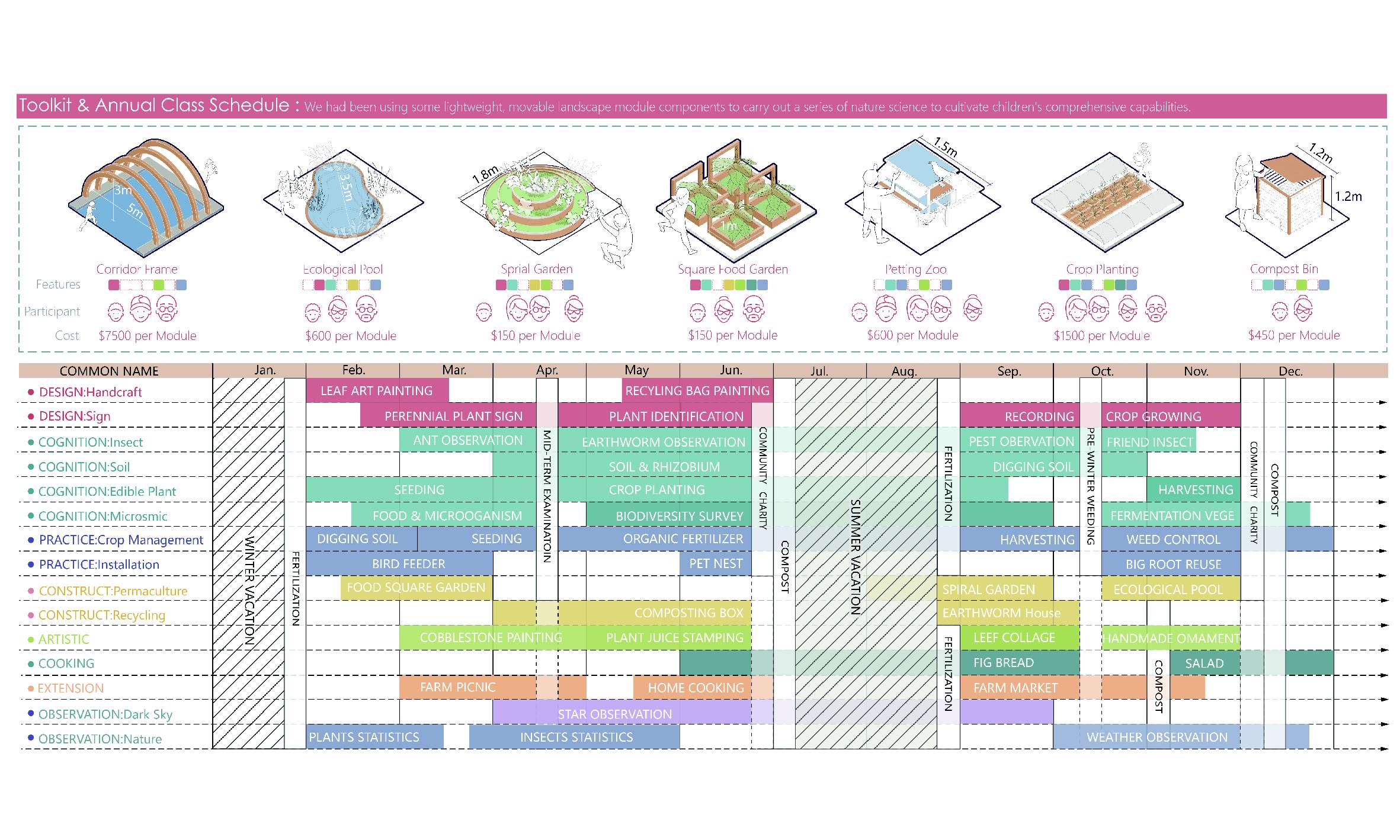
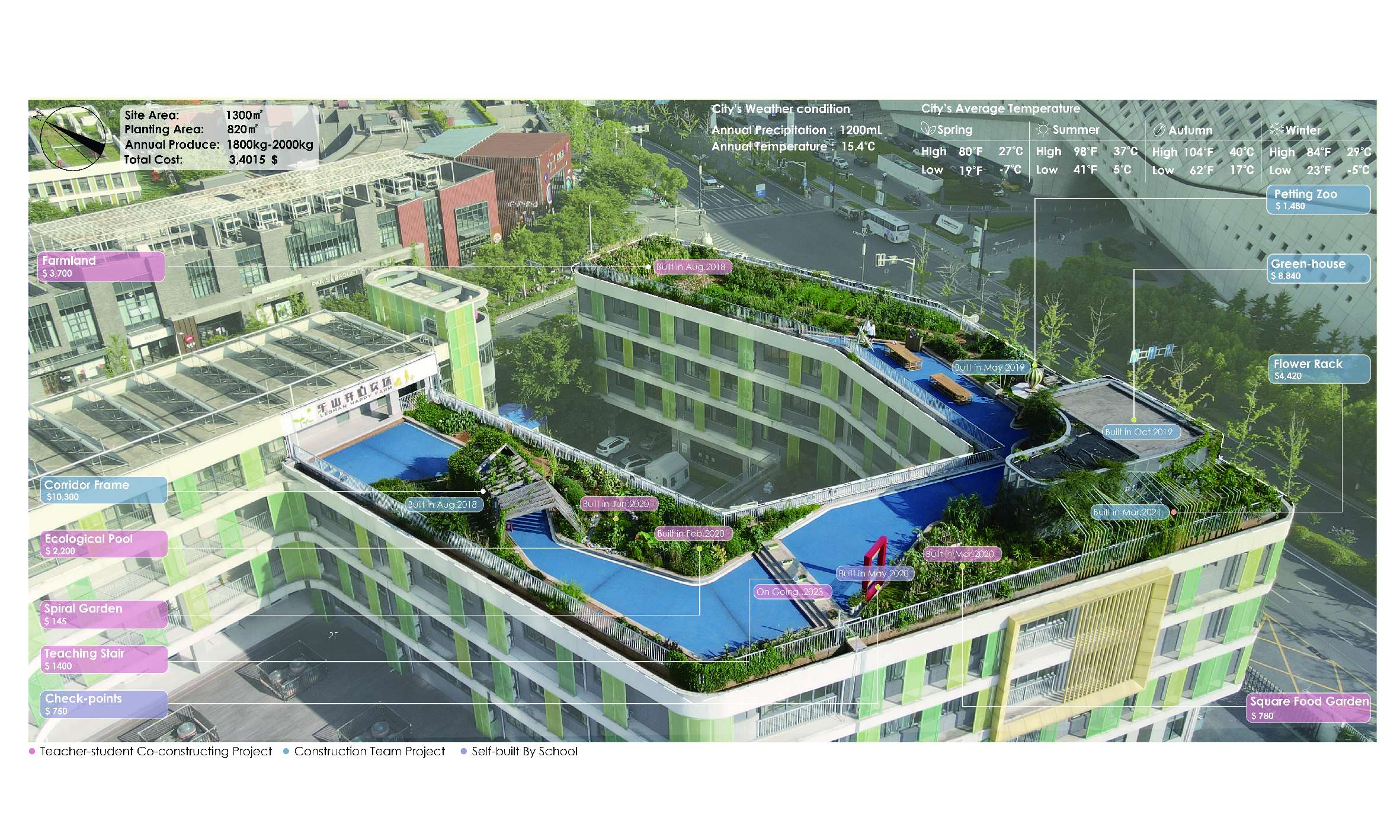
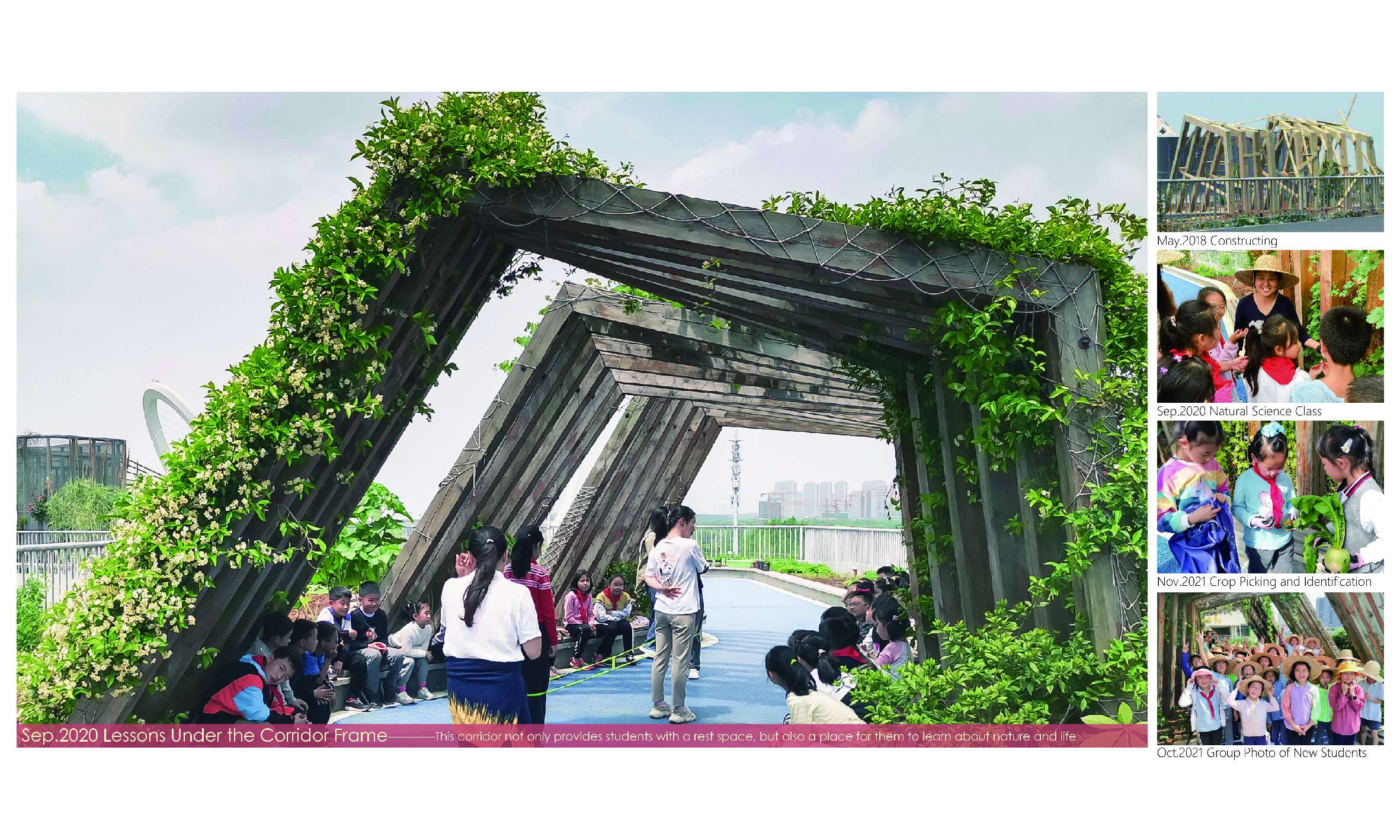
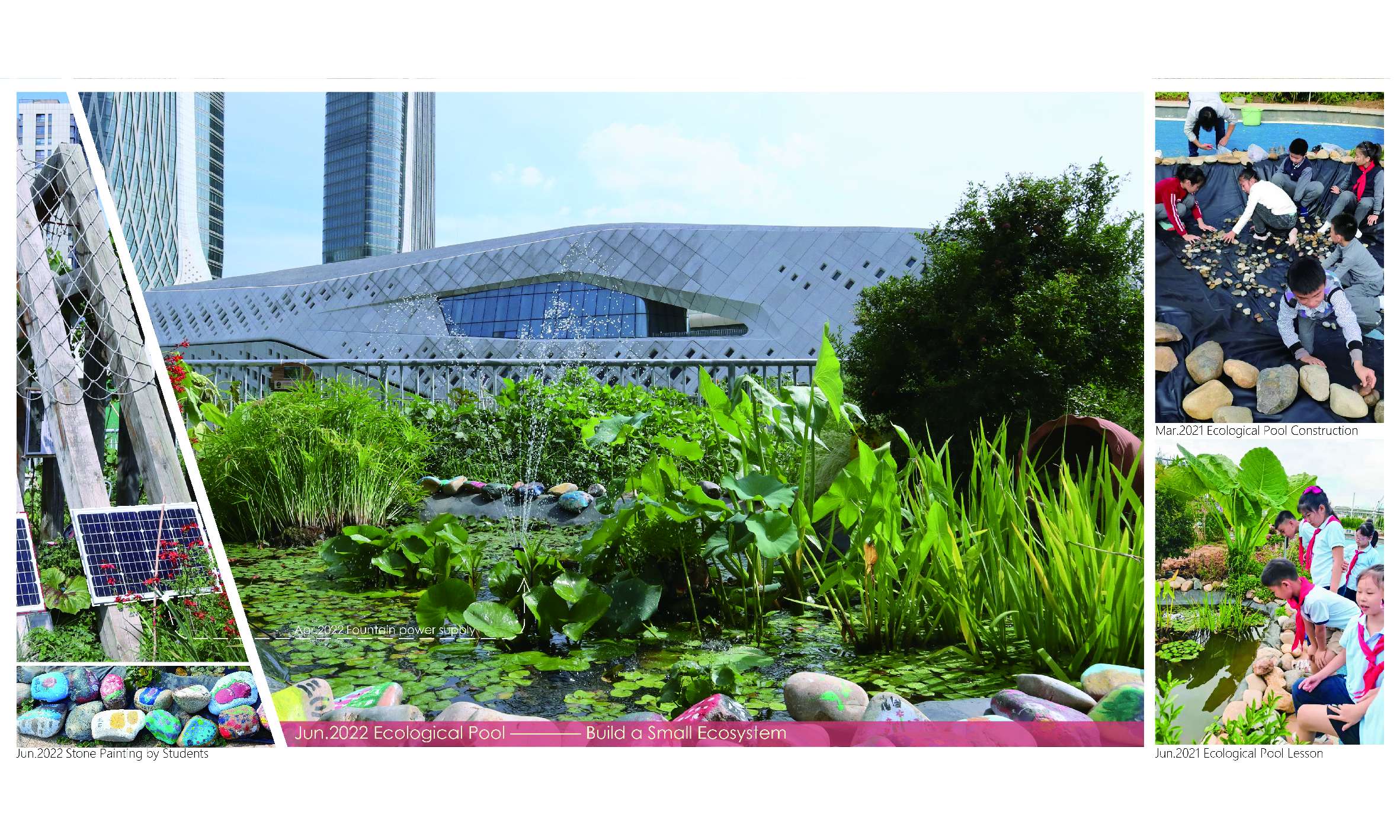
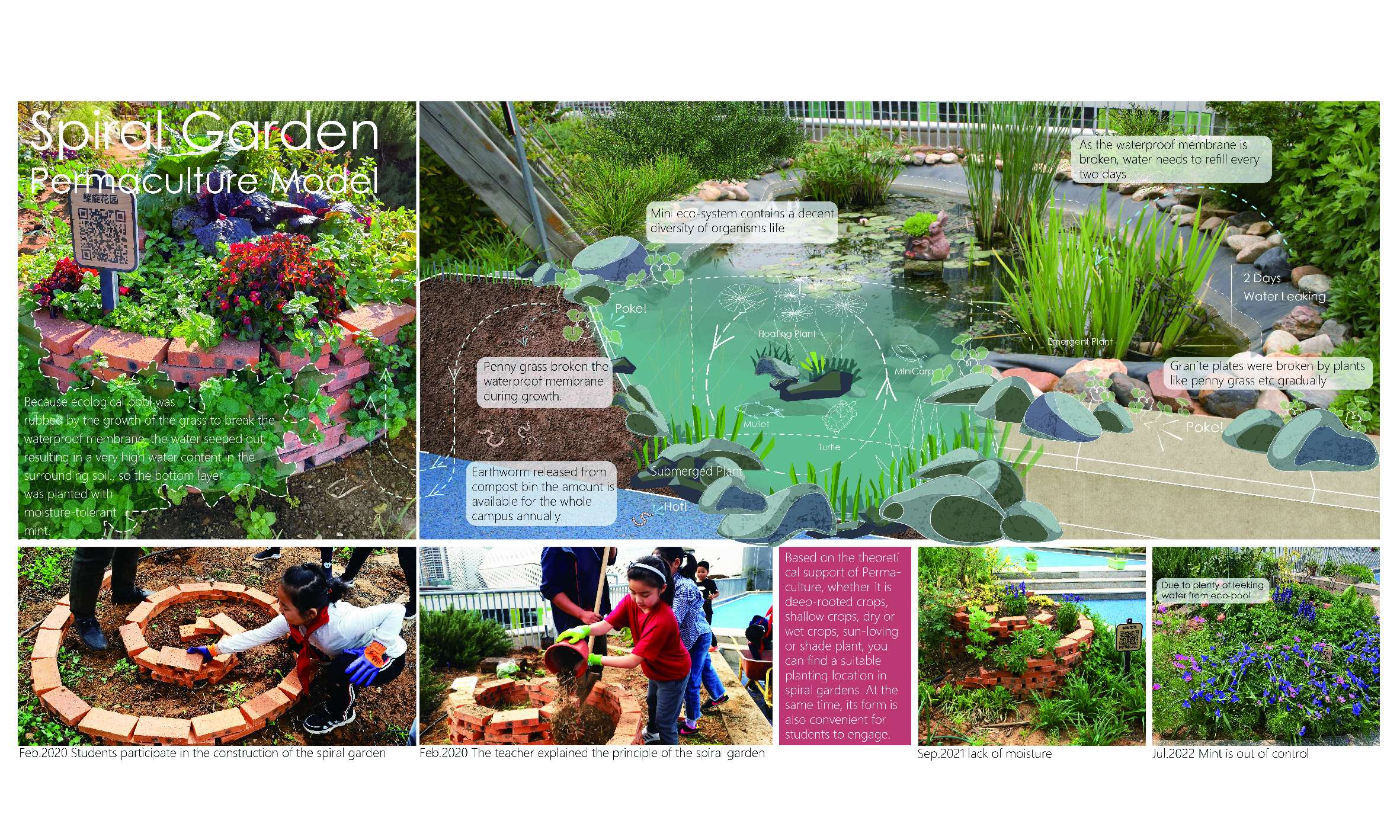
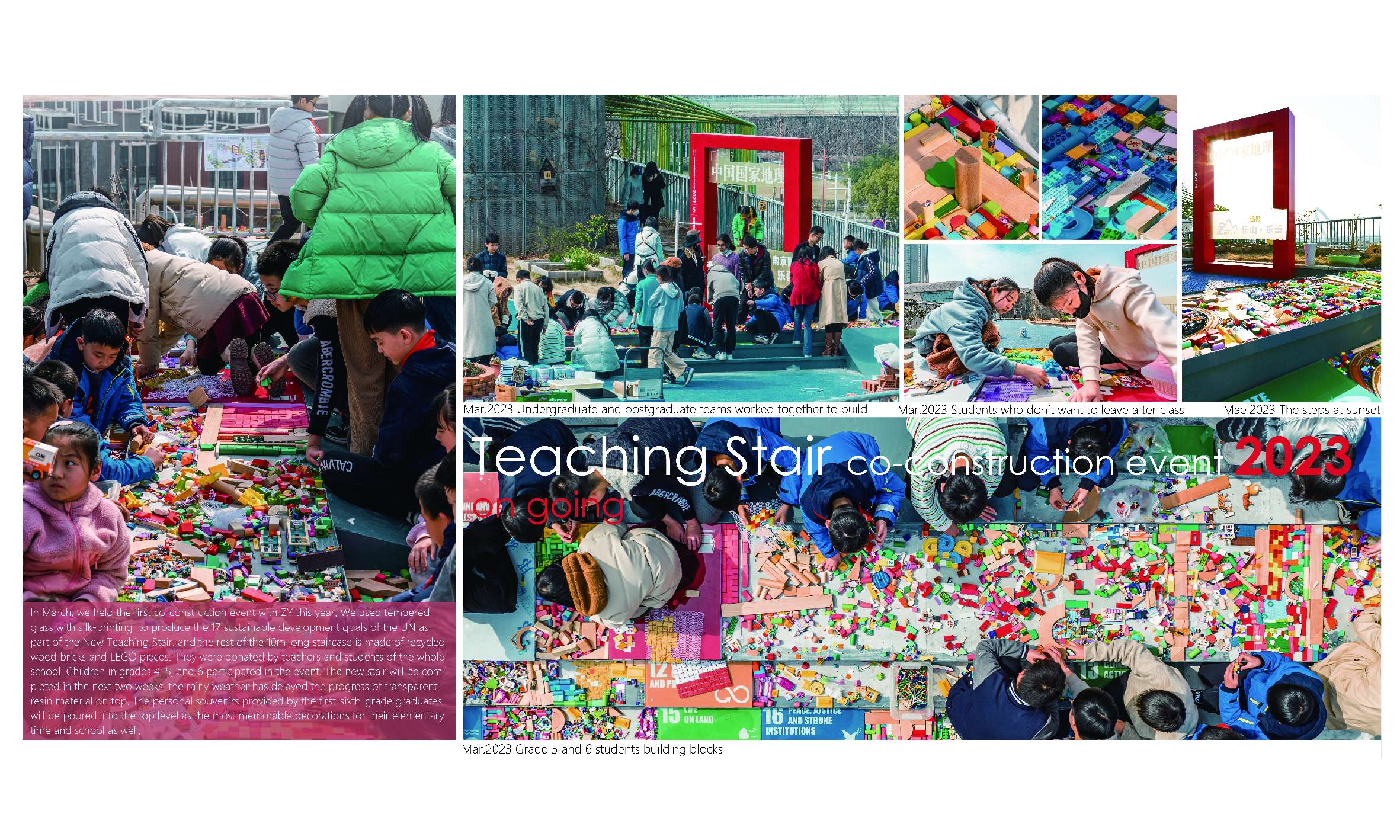
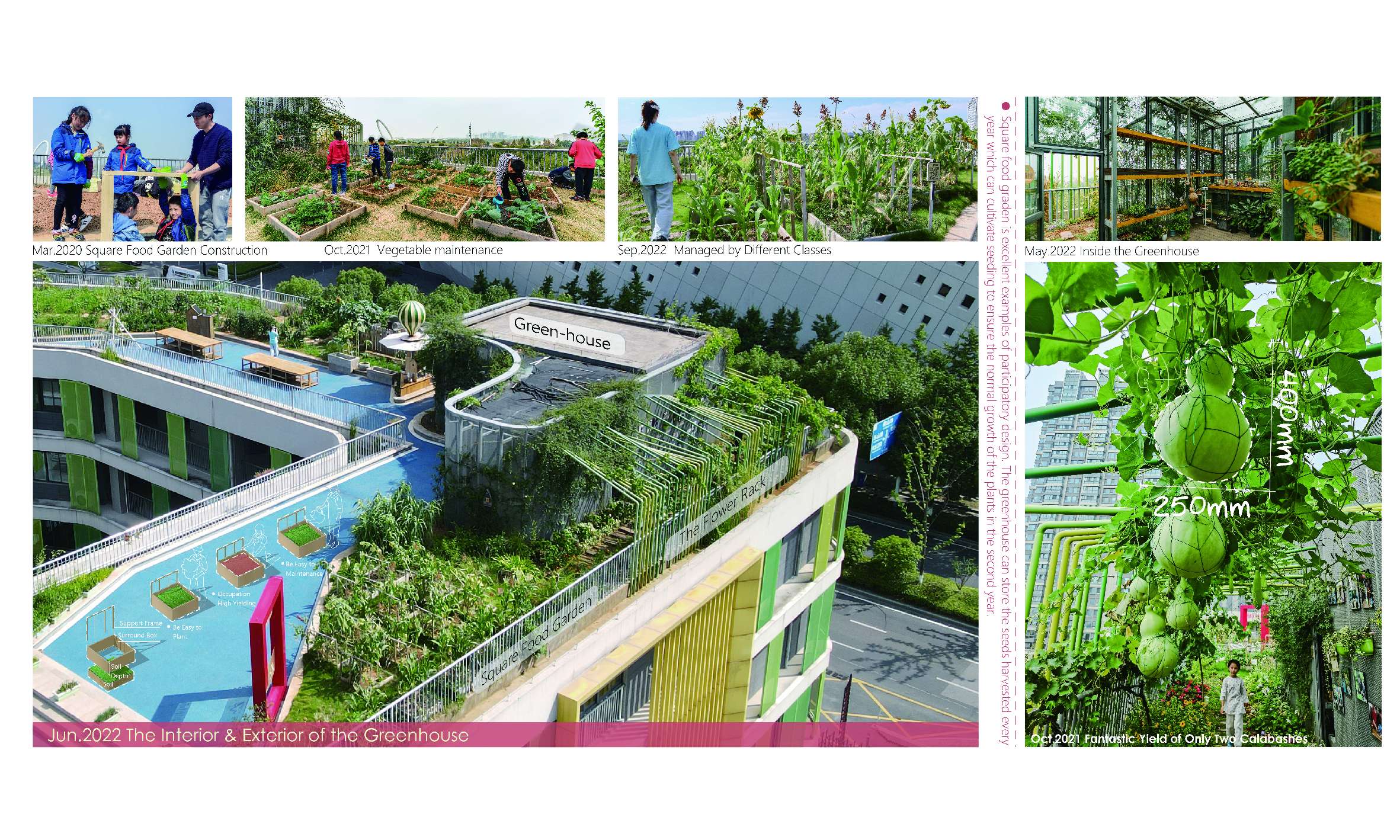
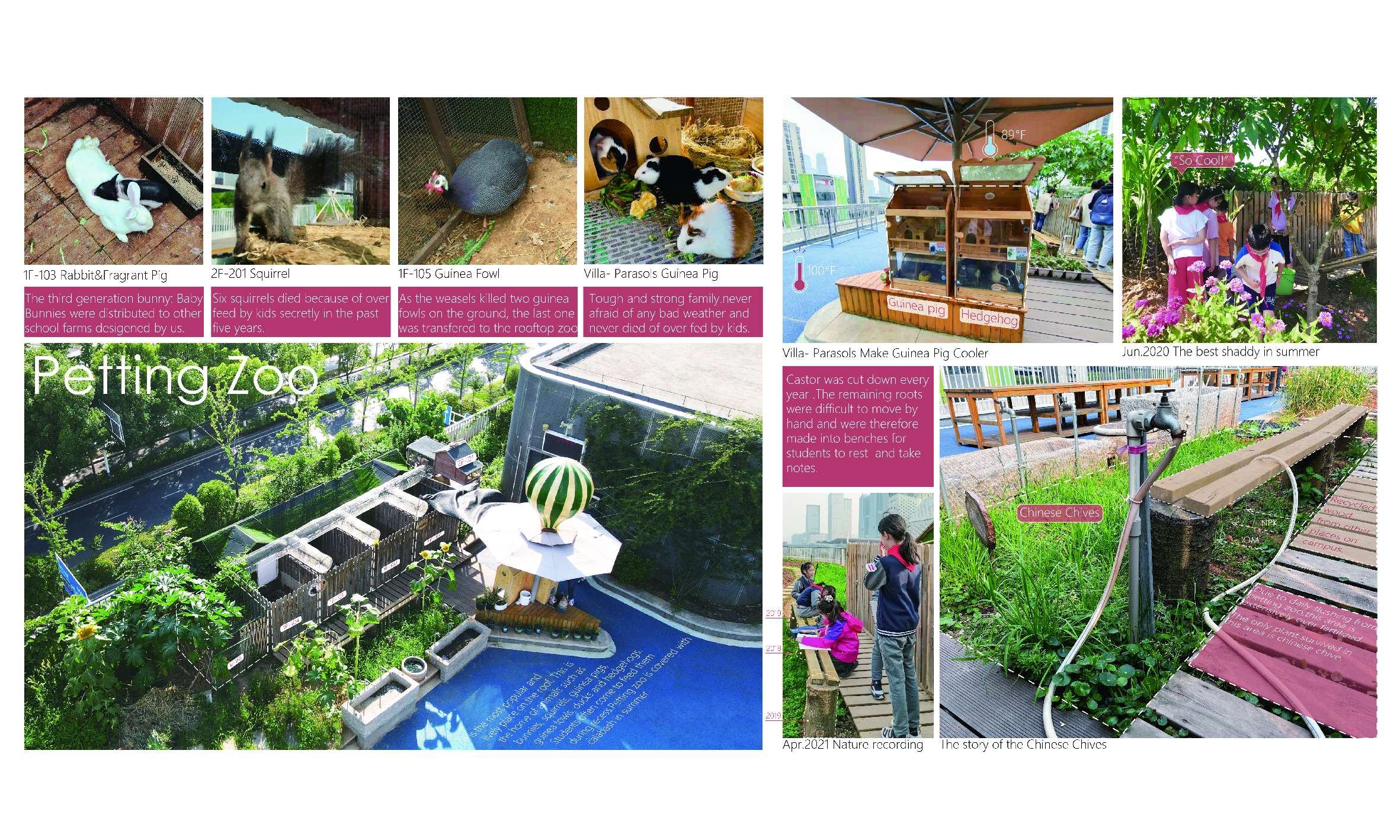
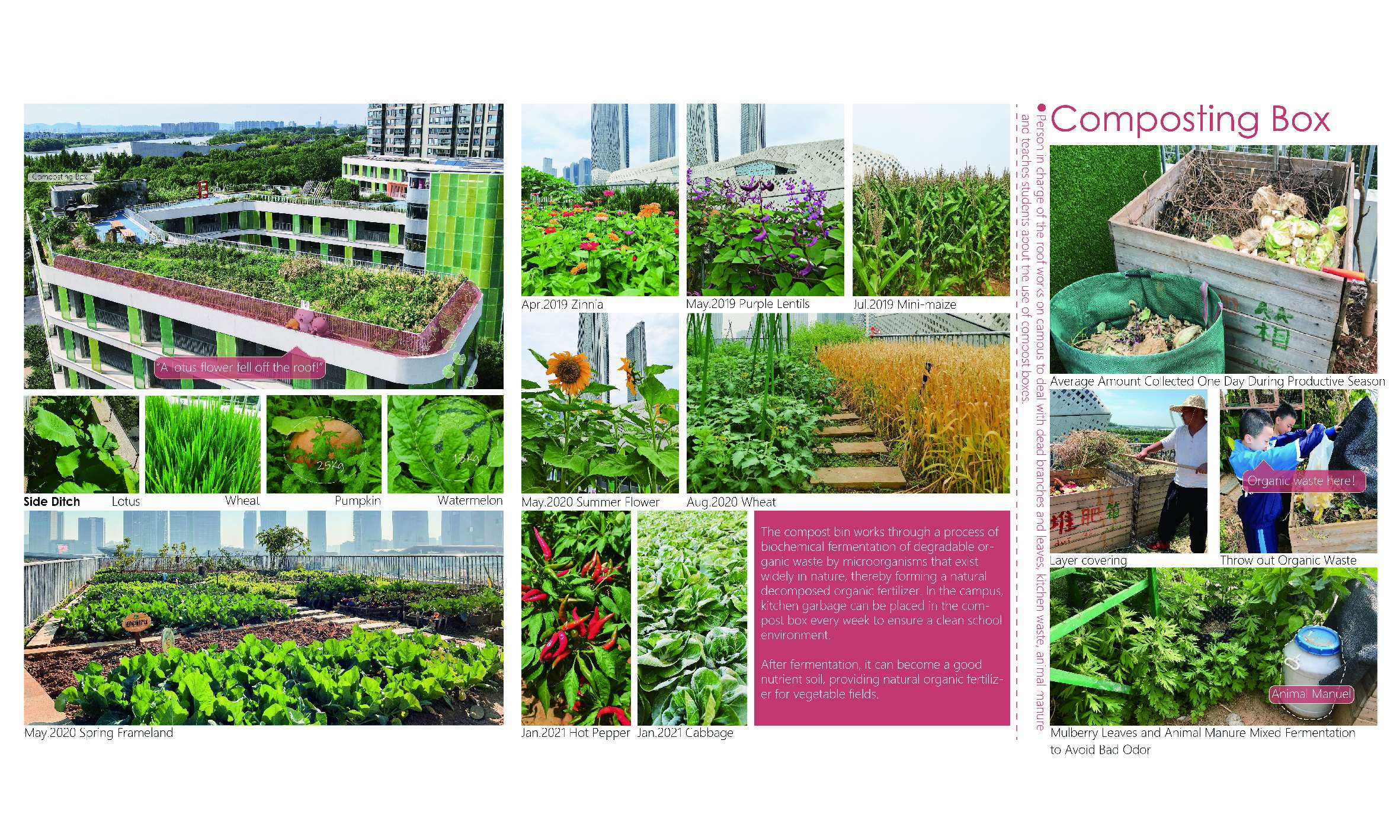
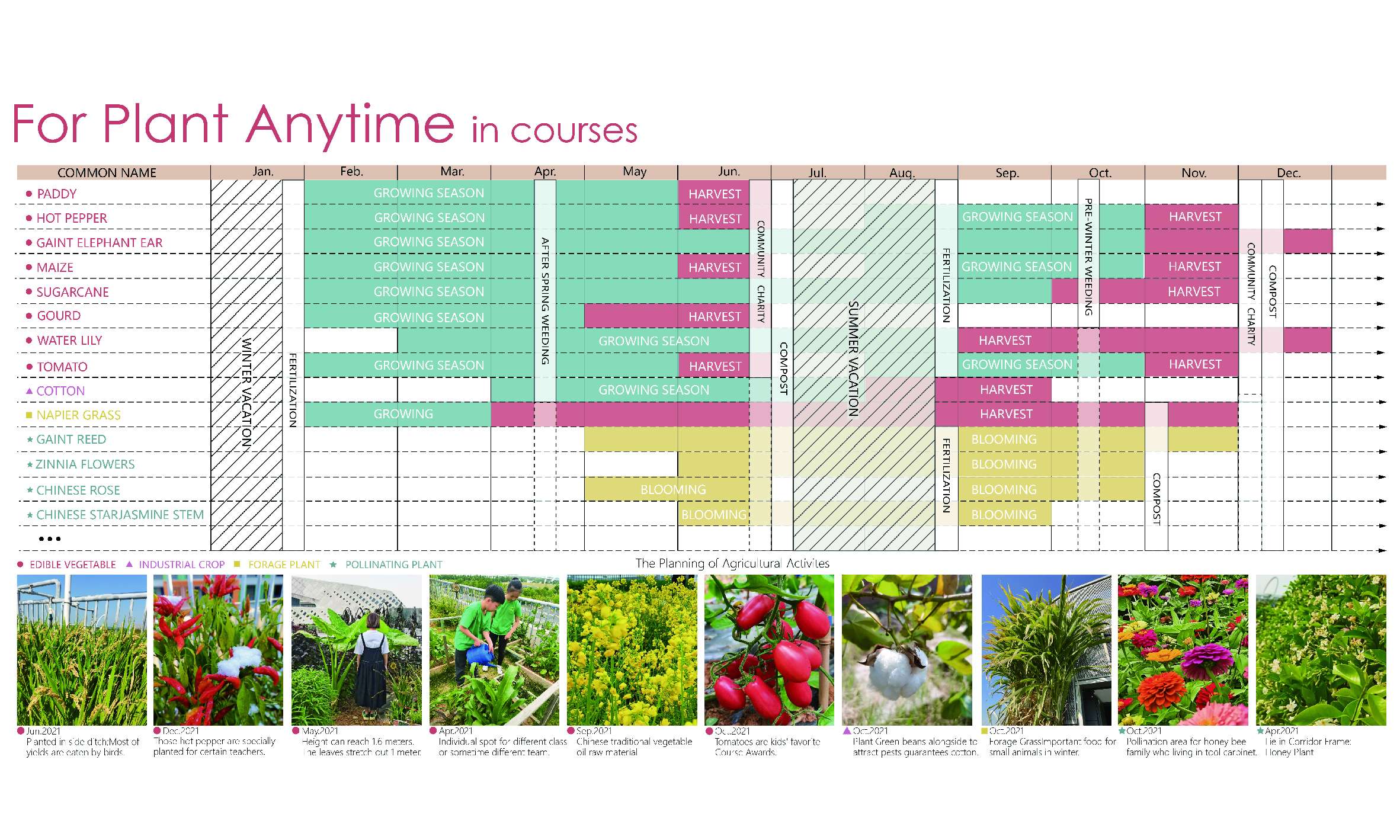
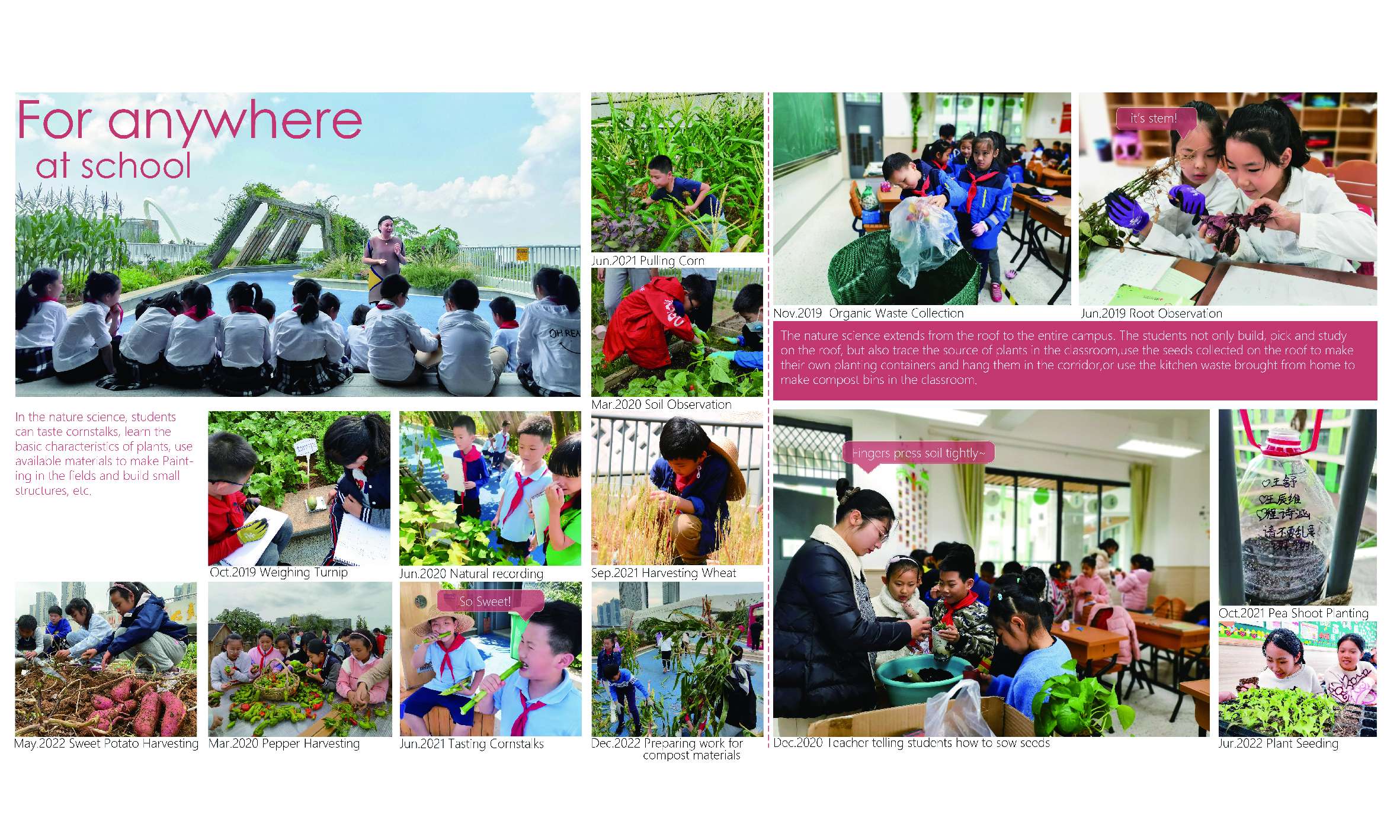

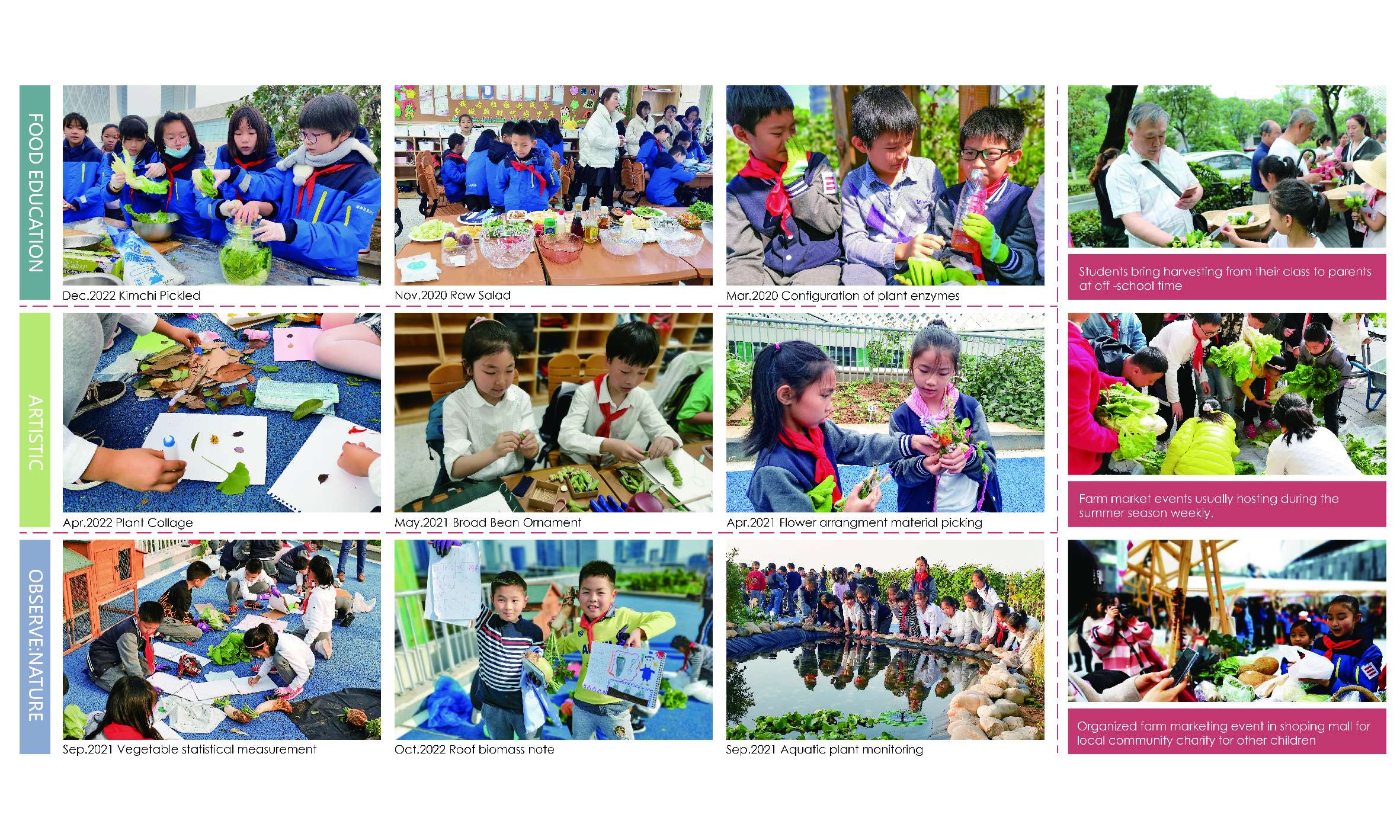

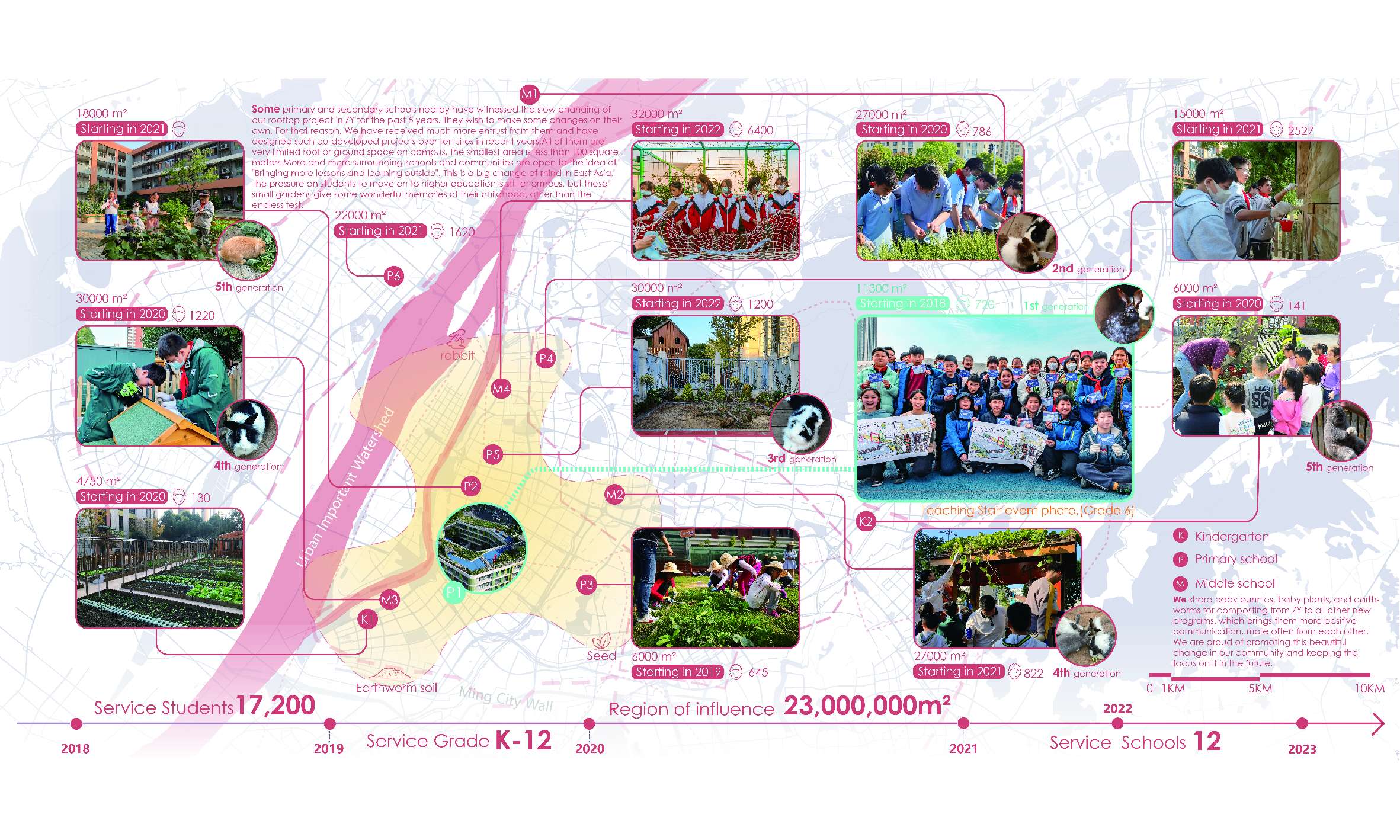
Oasis B612: Sowing Constellations, Cultivating Connections
B612号云端绿洲:在屋顶播种星辰与友谊
Oasis B612: Sowing Constellations, Cultivating Connections
Our seemingly modest small-scale environmental project was truly transformative and embodies the spirit of Landscape-support children’s education. It’s humbly in the power of landscape architecture to engage and improve the lives of everyone regardless of background. Our design provides genuine opportunities for young people to connect with nature and each other supported by significant educational, ecological, and sustainable value. The project has given a second life to neglected primary school roof space, creating a new rhythm of school life with art landscape architecture that plays an intrinsic part, providing a creative outlet for the children. A truly delightful and optimistic project for our times.
With the pressure of competition for higher education intensifying year by year,students spend 8 to 10 hours per day, 5.5 to 6.5 days per week in school, and no more than 1 hour per day for outdoor recess. Therefore, campus green space is the most accessible natural environment for children. It has become the most vital resource for reducing the daily pressure that Chinese students suffered.
The project gradually transforms the roof of the primary school's main teaching building (1300㎡) into an outdoor classroom starting with nature education. There are more than 80 kinds of vegetables and fruits routinely planted on the roof throughout the year, and more than 30 kinds of annual and perennial flowers and flowering shrubs, with an annual output of nearly 1,800 kilograms of fruits and vegetables. The garden also raises nearly 10 kinds of small animals.
Considering China's high-density cities, this project provides a low-cost (less than €17,800 to launch a new project), sustainable approach to redeveloping existing Chinese schools of the compulsory educational stage. In the design strategy, including at least six basic design units, vegetable gardens, teaching galleries, ecological pond, greenhouse, composting, and petting zoo, use these elements as a medium to provide a seasonal space theme to support more than 30 different environment science courses and even gradually bring the traditional indoor subjects such as art, mathematics, and biology to have few lessons outdoor, significantly increasing the length of children's physical contact with nature and promoting children's health and sense of collaboration.
Being limited by the construction and maintenance fund management of Chinese public schools, the project was slowly completed by the design team, school, and professional construction company over 5 years, with a total cost of less than €44,300. The design team, social organization, community, and school are all involved in daily outdoor lessons, and most of the minor maintenance or co-design work such as plant management, facilities updating, and art design are capable of carrying out in the daily sessions.
The project succeeds in creating a magical bond between students and nature, providing spaces for students to meaningfully connect with their natural surroundings. Such programs are difficult to gain recognition from schools, parents, and communities in typical Chinese cities where the pressure of competition for higher education, and general social values do not allow children to "go outside to play." The school reached a great consensus with the design team on the concept of the project in the early stage and withstood the social pressure of traditional cognition, which is the decisive factor to ensure the project can be implemented. The success of the project has made communities and institutions in nearby areas begin to notice that the participatory green space has significantly improved the health of students (myopia rate and depression incidence), and the influence of the project has expanded accordingly.
The project is a good example of an appropriate and balanced intervention that provides a high-quality environment for the educational process within a limited roof space.
This project is the school that started the earliest, lasted the longest, and maintained the best operation. As a result, the design team got more invitations and was able to build nature education sites of different sizes in more than ten surrounding schools in the past two years.
